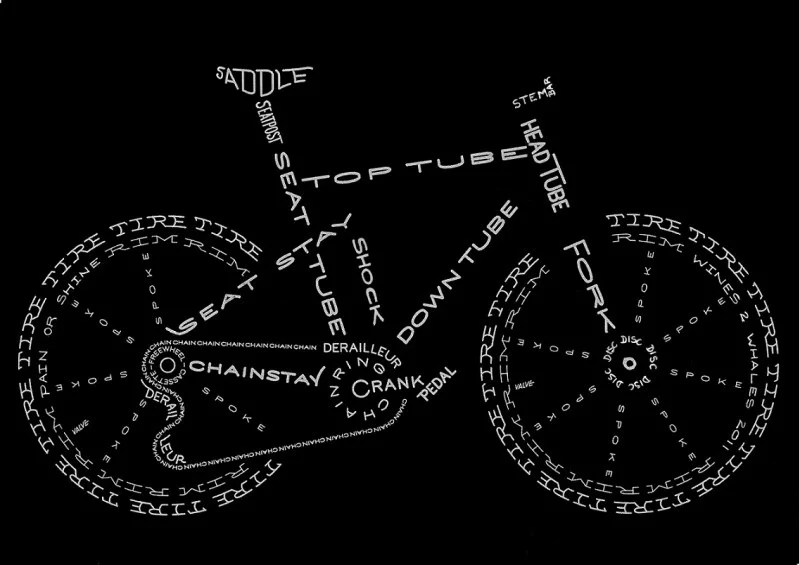Bike/Pedestrian Safety
Bicycles
See the latest Indiana State Laws compiled by Bicycle Indiana. Click HERE to download the document.
Although you don’t need a license to ride a bicycle, bicycles and motorized vehicles often share the same roads. Like a car, it’s important to keep your bicycle tuned up and follow the rules of the road. Unlike a car, there is nothing between you and the pavement. So, follow these simple bicycle rules to stay safe and enjoy injury-free bike rides this summer.
Wear a bicycle helmet – no matter what your age. Adults and children alike suffer head injuries during bicycle crashes. Studies have proven that certified bicycle helmets, worn properly, save brains. So, be smart about riding, and wear a helmet!
Make sure your helmet fits properly. It should be snug and level on your head. It shouldn’t be too tight or too loose. Don’t wear a hat under your helmet. If you have questions about how to wear your helmet, ask someone at a bicycle store to help you.
Check your bike to make sure it’s ready to ride. Are your tires in good condition with the right amount of air pressure? Do your brakes work? Are your seat and handlebars adjusted properly? If you have quick release levers, are they tightened? Does your bike have reflectors? It’s a good idea to have your bike tuned-up by a professional at least once a year.
Dress to be seen and safe. Light or bright clothing is ideal for biking so you are visible to traffic. Anything that is loose or dangles can get caught in your chain or tires, and cause you to lose control of your bike. So, tuck those shoelaces in and avoid baggy clothing while cycling.
Cover your toes. Flip-flops, sandals, and high-healed shoes look great for summer, but won’t help you grip bike pedals, and may cause your feet to slip. Sneakers work best on bikes, and will protect your feet if you fall.
Obey the rules of the road. Stay on the right side of the street and obey traffic laws. Ride single file and straight – no quick darts or surprises. Always signal turns, and look all ways before turning. Remember to yield to pedestrians.
Be smart about biking. Keep your hands on your handlebars so you are in control of your bike. Never use headphones, earphones, or cell phones while biking. Give a call out before you pass so people know you are coming, and always pass on the left.
Drink before you're thirsty, eat before you're hungry. Take along plenty of water. Use sports drinks for longer rides. Snacks to take along include cereal bars, cookies, fig bars, and fruit (bananas, apples are best).
Items you should carry: Identification, money (for ice cream or other goodies along the ride), tools, spare inner tube, bicycle pump. There are many different bags that you can attach to your bike that could carry what you'll need for the day.
Plan a ride less than 10 miles when riding with small children, those who haven't bicycled very much or if the terrain is challenging. Plan stops along the route or have a destination in mind for the ride.
Source: https://www.in.gov/isdh/23925.htm
How to fit your bicycle helmet:
Know the Basics—Pedestrian Safety
10 Walking Safety Tips
Be predictable. Follow the rules of the road and obey signs and signals.
Walk on sidewalks whenever they are available.
If there is no sidewalk, walk facing traffic and as far from traffic as possible.
Keep alert at all times; don’t be distracted by electronic devices that take your eyes (and ears) off the road.
Whenever possible, cross streets at crosswalks or intersections, where drivers expect pedestrians. Look for cars in all directions, including those turning left or right.
If a crosswalk or intersection is not available, locate a well-lit area where you have the best view of traffic. Wait for a gap in traffic that allows enough time to cross safely; continue watching for traffic as you cross.
Never assume a driver sees you. Make eye contact with drivers as they approach to make sure you are seen.
Be visible at all times. Wear bright clothing during the day, and wear reflective materials or use a flashlight at night.
Watch for cars entering or exiting driveways, or backing up in parking lots.
Avoid alcohol and drugs when walking; they impair your abilities and your judgment.
TALK BUS SAFETY WITH YOUR CHILDREN
School buses are the safest way for children to travel to and from school. Your child should arrive at the bus stop at least 5 minutes before the bus is scheduled to arrive. Teach them to play it SAFE:
Stay five steps away from the curb.
Always wait until the bus comes to a complete stop and the bus driver tells you to board.
Face forward after finding a seat on the bus.
Exit the bus when it stops and look left-right-left for cars before crossing a street.
Walk to school - wATCH THE ROAD
Walking to school is great exercise, but children under 10 years old should be accompanied by an adult or with someone who will make sure they walk safely. If you’re walking:
Use the sidewalk whenever possible, and if there isn’t a sidewalk, walk on the edge of the street facing traffic.
Whenever they are available, use marked crosswalks to cross the street, and look left-right-left for vehicles or bikes before crossing.
Make sure you never play, push or shove others when you walk around traffic.
Everyone should watch the road, not their phones.
Use the safest route to school
Safe Routes to School programs aim to make it safer for students to walk and bike to school and encourage more walking and biking where safety is not a barrier. Visit: http://www.saferoutesinfo.org/ to learn more.
Be a Defensive Cyclist, Walker, and Runner
Be aware of your surroundings during your activity. When walking, running, or cycling, use your good judgement on trails, sidewalks and streets and consider the unseen hazards and the mistakes other people make. Paying attention to who and what is around you, to what you see and hear is vital to being safe in our community. Take notice of other walkers, runners, cyclists, and cars around you; if you use earbuds to listen to music, consider lowering the volume, or using only one earbud in one ear. This helps you be aware of your surroundings and what is taking place near you and your activity.
See information about Electric Bicycle Laws by the State Featured on the National Conference of State Legislators:
https://www.ncsl.org/research/transportation/state-electric-bicycle-laws-a-legislative-primer.aspx
National Highway Traffic Safety Administration Resources:






